Recent Articles
Popular Makes
Body Types
2019 Subaru Outback vs. 2019 Toyota 4Runner: Which is Best?
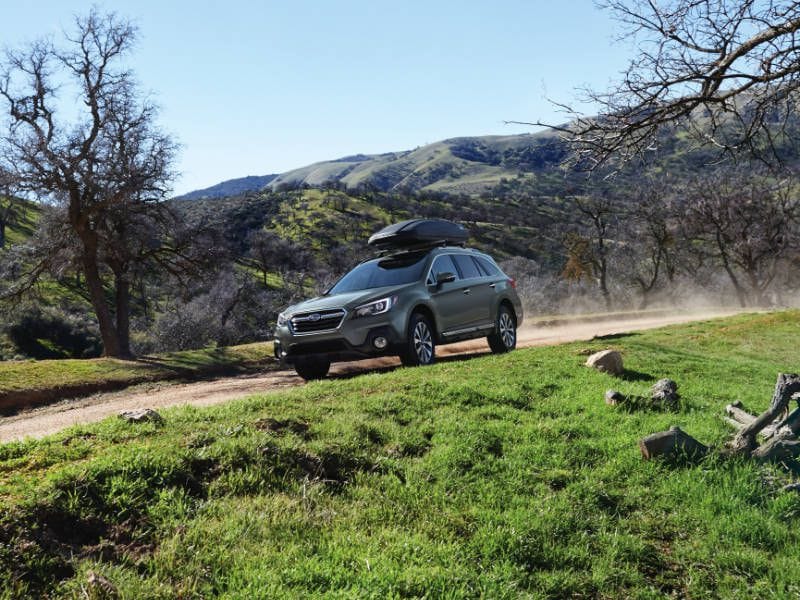
2018 Subaru Outback front three quarter carrying luggage ・ Photo by Subaru
In the current red-hot market for SUVs, it can be challenging to really dig in and find out what kind of SUV works best for you. There are still big differences between brands and models.
Two of the most popular SUVs on the market this year are the 2019 Subaru Outback and the 2019 Toyota 4Runner. We’ll highlight the differences between these two vehicles and render a decision, but you need to choose for yourself which one best meets your needs.
Trim Levels and Pricing
The 2019 Subaru Outback comes in four trim levels and with your choice of two engines. The basic 2.5-liter four-cylinder engine is available in the base trim starting at $27,320, or you can select the Premium trim with heated front seats for $29,420, Limited trim at $33,820 with leather and a Harman Kardon stereo, or the top Touring trim at $37,770 with a heated steering wheel and GPS navigation. The Subaru also is available with a 3.6-liter six-cylinder engine in the Limited trim for $35,970, or in the Touring trim for $39,970.
The 2019 Toyota 4Runner comes in six different trim levels, starting with the base rear-wheel-drive SR5 at $35,955. Upgrade trims include the SR5 Premium with integrated navigation at $38,910, or the Toyota Racing Development (TRD) Off-Road model with features like hill start assist, crawl control, and Multi-Terrain Select for $38,975. Choosing TRD Off-Road Premium adds SofTex upholstery and the Entune premium audio system for $40,290. The TRD Pro trim includes upgraded suspension for $47,460. Limited trim includes front and rear parking sonar, leather, and a power moonroof for $45,700.
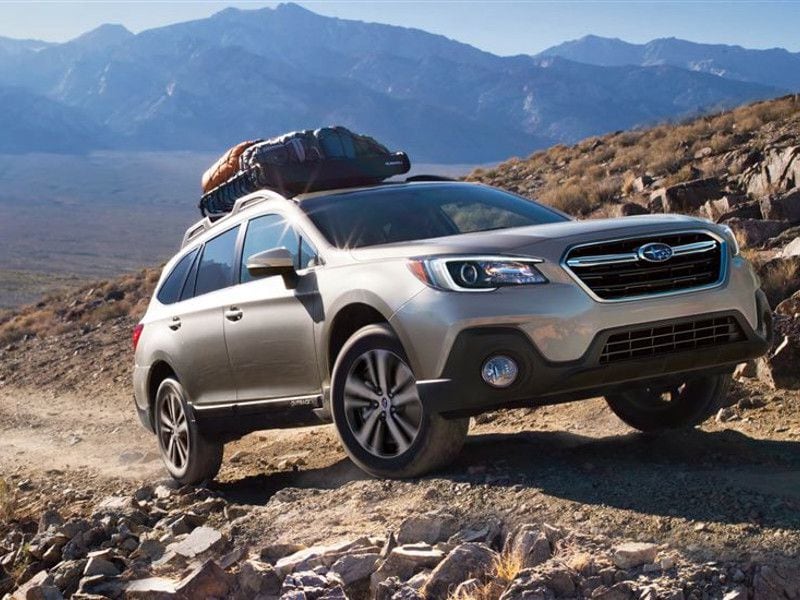
Photo by Subaru
Interior Luxury
The Toyota 4Runner offers a very tough and businesslike interior, like a pickup truck. It’s comfortable, but definitely on the rugged side. SofTex simulated suede upholstery is available in some mid-grade trims, and high-grade leather in the Limited trim. Heated and ventilated seats along with power lumbar support are available in the top trims.
The Subaru Outback cabin is much more car-like, with a dashboard and interior layout ranging from economical to near-luxury. All trims above the base model receive a power driver’s seat, and the Limited and Touring trims add driver seat memory and a power passenger seat. Leather upholstery is standard on Limited and Touring models.
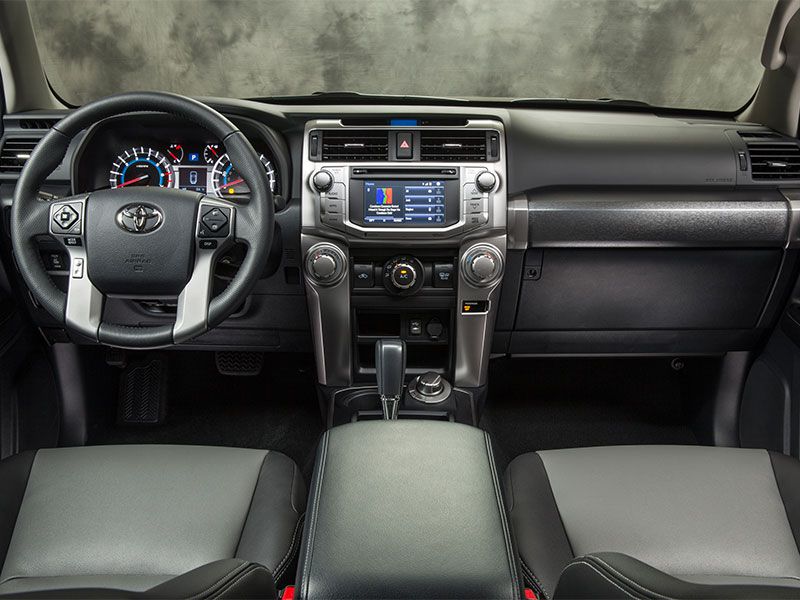
Photo by Toyota
Cargo and Passenger Volume
The 2019 Subaru Outback is designed to carry five passengers in two rows. The Outback offers 35.5 cubic feet behind the second-row seats, or 73.3 cubic feet with the rear seat lowered. Passengers enjoy up to 40.8 inches of headroom in the front seat and 38.1 inches of legroom in the back seat.
The 2019 Toyota 4Runner can handle five passengers in two rows, or buyers can select the optional third-row seats and carry seven. The 4Runner offers 9.0 cubic feet behind the third-row seats, 46.3 cubic feet behind the second row, or up to 89.7 cubic feet with all rear seats lowered. Passengers get up to 39.3 inches of headroom in the front seat and 32.9 inches of legroom in the second row.

Photo by Toyota
Technology and Infotainment
The 4Runner offers a 6.1-inch touchscreen interface with Toyota’s Entune smartphone integration system on all trims, with integrated navigation capability on all trims above the base. The navigation system comes with voice control, predictive traffic reporting and a Doppler weather radar overlay. A 15-speaker JBL sound system is available, and comes standard on higher trims. A backup camera is standard, while front and rear parking sonar is included on higher trims.
The base Subaru Outback comes with a 6.5-inch touchscreen, and all other trims include an 8-inch touchscreen system with Subaru’s StarLink smartphone integration. GPS navigation is optional on Limited and standard on Touring trim levels. A 12-speaker Harman Kardon audio system is standard on both Limited and Touring trims. A backup camera is standard on all trims.
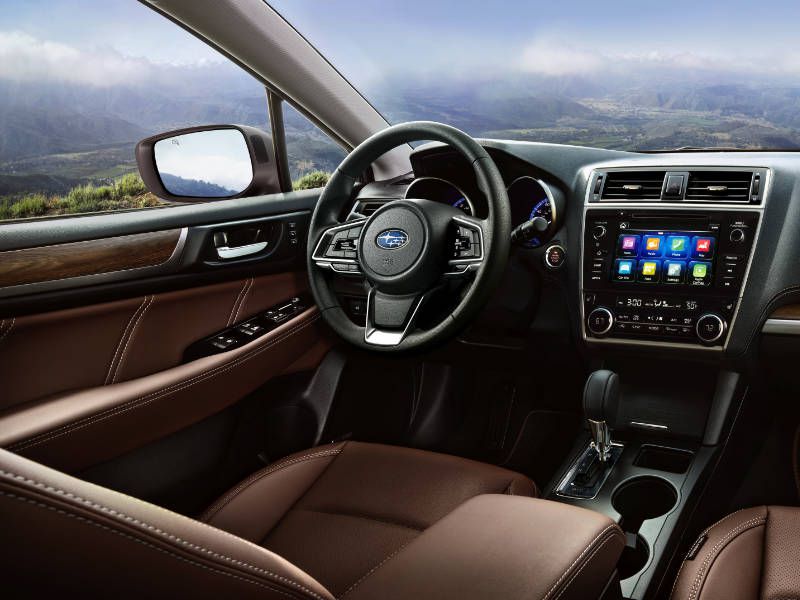
Photo by Subaru
Advanced Safety Features
The Subaru Outback includes the advanced EyeSight driver assistance system on all trims. This package implements adaptive cruise control, pre-collision braking, lane departure and sway warning, and lane keep assist. Additionally, blind spot monitoring with lane change assist and rear cross-traffic monitoring is optional on Premium trim and standard on Limited and Touring trims. Automatic reverse braking for obstacles is optional on Limited and standard on Touring trims.
The Toyota 4Runner does not offer the advanced features like adaptive cruise control and lane keep assistance, but all 4Runner models include Toyota’s Star Safety System, which features stability and traction control, anti-lock brakes, and brake assistance.
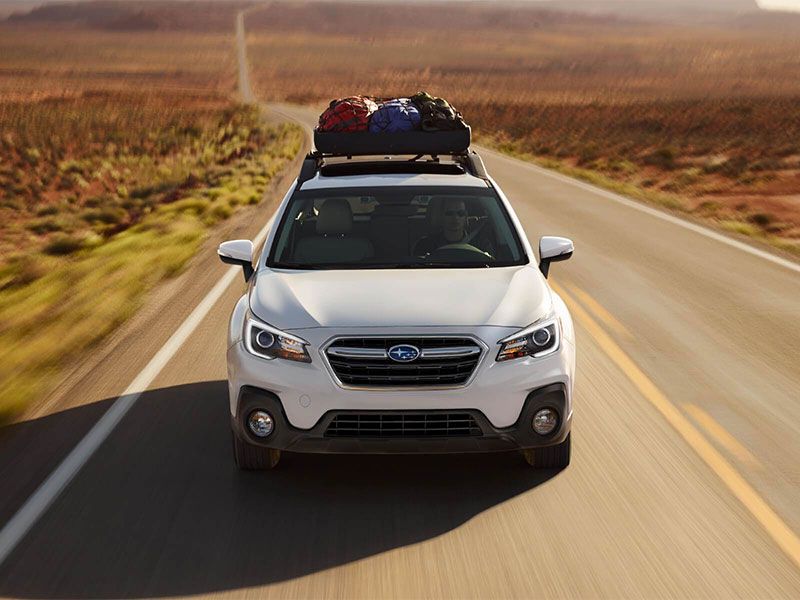
Photo by Subaru
Engine and Transmission
All 4Runner models come equipped with a 4.0-liter V6 engine rated at 270 hp and 278 lb-ft of torque, paired with a 5-speed automatic transmission and rear-wheel or four-wheel drive. Fuel economy is rated up to 17 mpg city and 21 mpg highway when equipped with rear-wheel drive, or 17 mpg city and 20 mpg highway with four-wheel drive.
The Outback offers either a 2.5-liter four-cylinder engine rated at 175 hp and 174 lb-ft of torque, or a 3.6-liter six-cylinder engine rated at 256 hp and 247 lb-ft of torque. All Outback models are equipped with Subaru’s Lineartronic continuously variable transmission and single-range symmetrical all-wheel drive. Outback models equipped with the four-cylinder engine return fuel economy of 25 mpg city and 32 mpg highway, while the six-cylinder models return 20 mpg city and 27 mpg highway.
Winner: Subaru Outback

Photo by Subaru
All-Wheel-Drive System
The Toyota 4Runner offers the choice of basic rear-wheel drive or one of two four-wheel-drive systems. Most trims offer an optional part-time 4X4 system that is very traditional in its operation. The driver shifts into 4WD and can select high range for normal road speeds or low range for challenging terrain. The top Limited trim includes a full-time 4WD system with active traction control and a Torsen limited-slip center differential with locking capability.
Subaru equips the Outback with its single-range symmetrical all-wheel-drive system. Subaru’s system includes X-Mode, which uses the traction control system to maintain progress on any kind of terrain. Subaru’s X-Mode also includes hill descent control for climbing down steep grades.
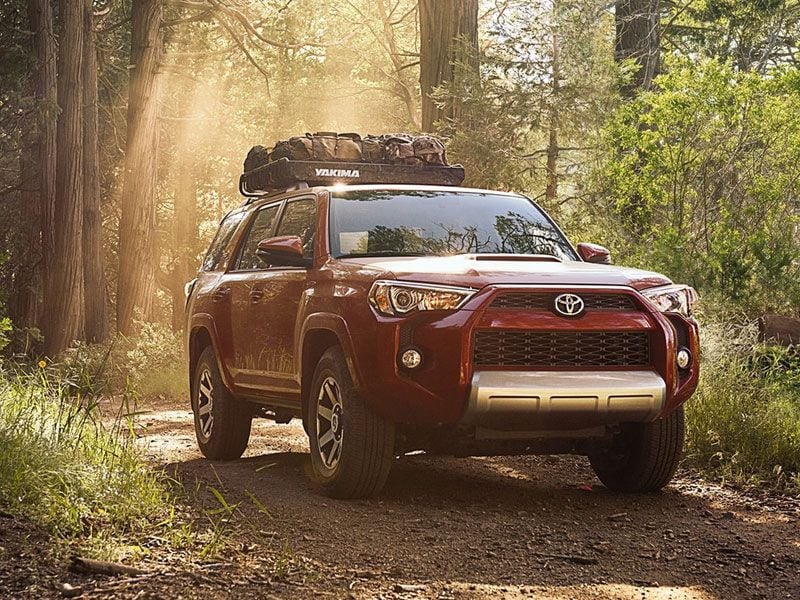
Photo by Toyota
Exterior Styling
The Subaru Outback design is mostly a station wagon look, with smooth curves and a generally car-like appearance. The Outback is designed with the “tall car” ride height that is expected with a crossover vehicle.
In contrast, the 4Runner shows its body-on-frame truck roots in a bold and squared-off look. The 4Runner has more ride height, which is great for off-road use, but it’s also harder to get into the cab. The 4Runner also is larger than the Outback. If you like a good old-fashioned SUV image, the Toyota 4Runner is among the best on the market.
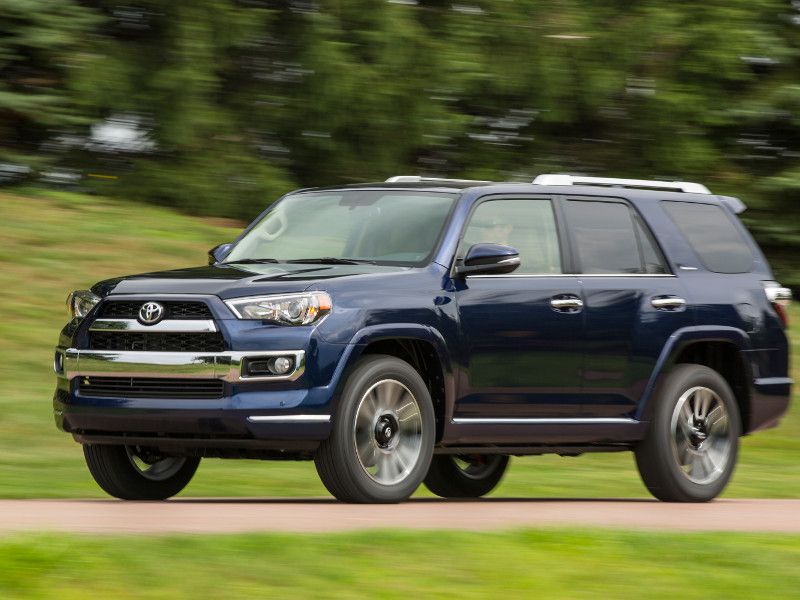
Photo by Toyota
Warranty
The Subaru Outback is covered by a 3-year or 36,000-mile standard warranty. The same period is covered by a wear parts warranty on the brake pads, wiper blades, and key transmitter batteries. Outback also includes a 5-year or 60,000-mile warranty on the powertrain, and a rust-through warranty for five years and unlimited miles.
The Toyota 4Runner also is covered by a basic 3-year or 36,000-mile standard warranty, with five years or 60,000 miles on the powertrain. The 4Runner is warranted against rust-through for five years, and the passenger restraint systems are warranted for five years or 60,000 miles.
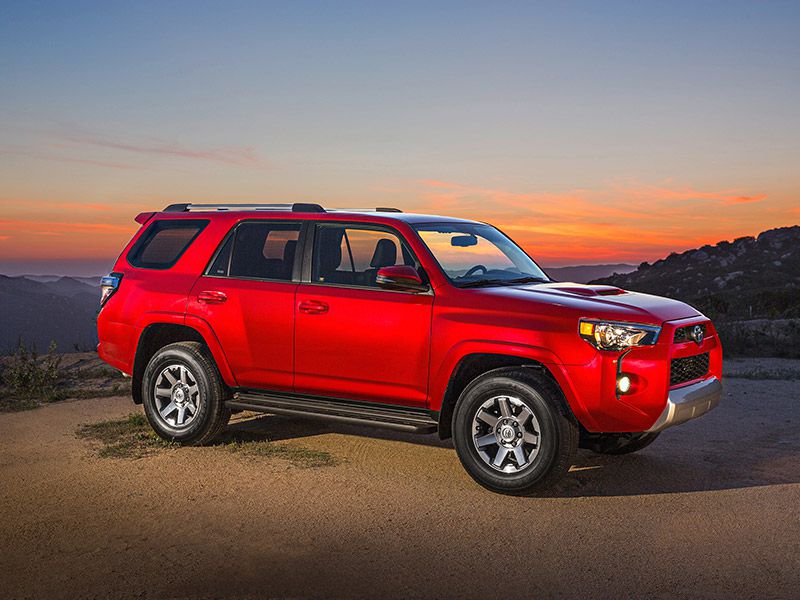
Photo by Toyota
Verdict
By the numbers, the 2019 Subaru Outback is our winner with four points, against three points for the 4Runner and two ties. But in many ways, the vehicles are so different that it’s hard to say the Outback is a better choice in all cases.
For example, if you plan to tow a trailer, the 4Runner will pull up to 5,000 pounds, while the Outback only will pull 2,700 pounds. All the infotainment systems in the world won’t make up for towing capacity when you need it.
The bottom line is that you should test drive both of these vehicles, and it will be obvious to you which one is the right choice to meet your needs.

Photo by Subaru